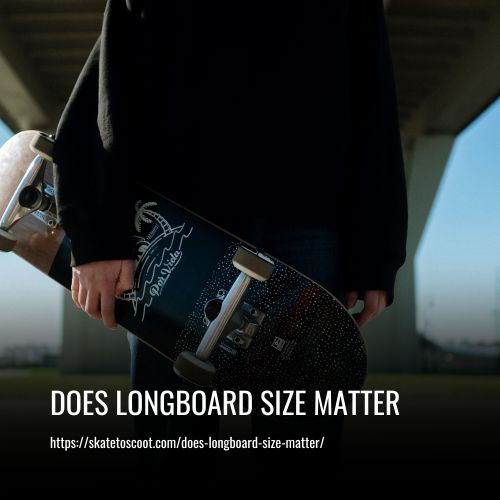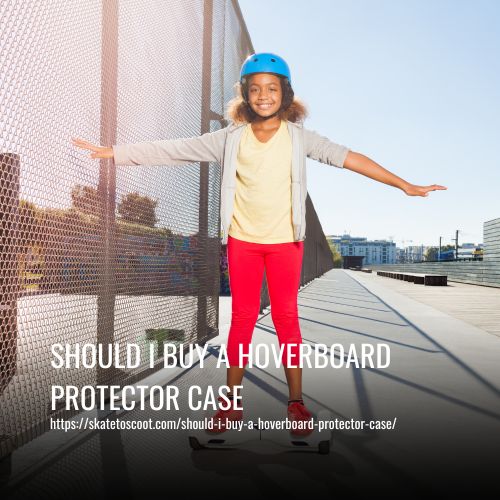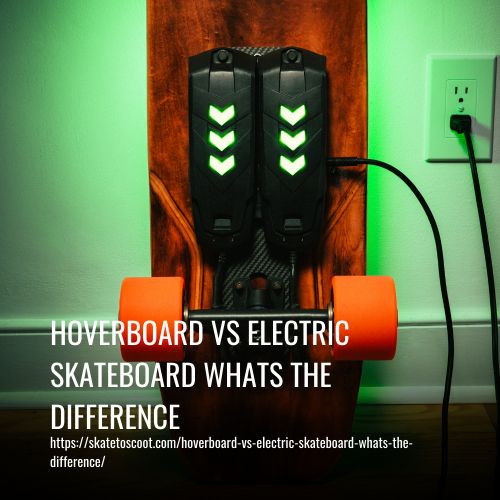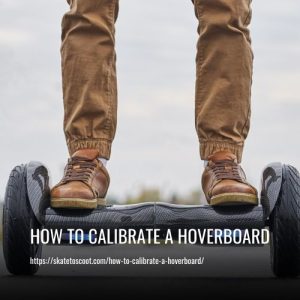As an Amazon Associate we earn from qualifying purchases.
Longboard size does matter when it comes to your riding experience. The size of your longboard directly influences its performance and suitability for different riding styles. On the other hand, shorter boards are ideal for freestyle or freeride maneuvers. They offer a more responsive and nimble ride, allowing riders to perform tricks and slides with precision. Rider size also plays a role in determining the appropriate longboard size. Taller and heavier riders may prefer larger boards for better stability and weight distribution.

What is Longboard Size?
Longboard size refers to the length, width, and shape of the board. It is an important factor to consider when choosing a longboard as it can greatly impact your riding experience. Longboards come in various sizes, ranging from small and narrow to long and wide. The size of the board can affect how it performs and how comfortable it is to ride.
For downhill skating, a longer board is preferred as it provides stability at high speeds, making it easier to control and maneuver. These boards are typically longer and have a symmetrical deck, allowing riders to ride the switch with ease.
On the other hand, shorter boards are ideal for freestyle or freeride maneuvers. They offer a more responsive and nimble ride, allowing riders to perform tricks and slides with precision.
How Does Longboard Size Affect Performance?
Longboard size plays a significant role in determining the performance and riding experience. From speed and maneuverability to stability and comfort, here’s how the size of a longboard impacts its performance:
1. Speed:
- Longer boards generally offer higher speeds due to their longer wheelbase.
- The increased stability provided by the longer wheelbase allows riders to maintain control at high speeds.
2. Maneuverability:
- Shorter boards are known for their superior maneuverability.
- The shorter wheelbase of these boards makes them easier to turn and carve, ideal for freestyle and freeride tricks.
3. Stability:
- Wider boards provide better stability compared to narrower ones.
- The wider platform offers a solid base, allowing riders to maintain balance and control.
4. Comfort:
- The size of the longboard can also impact the rider’s comfort level.
- Taller riders may find longer boards more comfortable as they provide more room for their stance and greater stability.
- Conversely, shorter riders may prefer shorter boards for a better fit and enhanced maneuverability.
Selecting the Right Size Board for You
When choosing the right size board for your needs, it’s important to consider both your riding style and body size. Longer boards are better suited for downhill and cruising, while shorter boards are more suitable for freestyle and freeride maneuvers.
1. Rider Weight and Height
When it comes to longboarding, the size of the board does matter, particularly in relation to the rider’s weight and height. Choosing the right longboard size is crucial for the overall stability, performance, maneuverability, and comfort of the rider.
Firstly, a rider’s weight significantly impacts the stability and performance of the longboard. Heavier riders require larger boards with wider decks and longer wheelbases to provide stability and ensure a smooth ride. A larger board will distribute the weight more evenly, preventing any wobbling or instability while riding downhill or at high speeds. It also allows for better control and balance, especially when performing turns or slides.
Secondly, a rider’s height plays a role in the maneuverability and comfort of riding. Taller riders typically prefer longer boards as they provide more legroom and a comfortable stance. Longer boards also offer an increased surface area for foot placement, enabling more control and ease in maneuvering.
2. Riding Style and Experience Level
When it comes to selecting the right size longboard, riding style, and experience level are crucial factors to consider. Different riding styles require specific board lengths and widths to optimize performance and control.
For downhill riding, longer and narrower boards are typically favored. These boards provide stability at high speeds and have a symmetrical deck for balanced foot placement. The longer wheelbase enhances stability, while the narrower width allows for precise maneuvering and quick turns.
In contrast, freeride involves slides and tricks, requiring a more versatile board. Typically, a shorter and wider board is preferred for easier maneuverability and stability while performing slides. The wider deck offers more leverage for controlling the board during tricks.
Cruising is all about comfort and enjoying a smooth ride. For this style, a longer board with a wider deck is ideal. It provides a larger surface area for foot placement, ensuring stability and balance even on rough terrains.
3. Larger Board for Heavier Riders
When it comes to longboarding, the size of the board plays a crucial role in determining the riding experience, especially for heavier riders. Choosing a larger board is particularly important for these individuals as it offers various advantages that enhance stability and control.
The weight of the rider can significantly impact the performance of the longboard. Heavier riders exert more force on the board, which can lead to instability, reduced maneuverability, and a higher risk of wheel bite. Hence, it is crucial to select a board that can handle the additional weight.
For heavier riders, longboards with a larger deck and wider width are recommended. These specifications provide a more stable platform, distributing the weight evenly and minimizing the chances of wobbling or losing control. Additionally, boards with a longer wheelbase offer better stability, allowing for a smoother and more confident ride.
4. Smaller Board for Taller Riders
When it comes to longboarding, size does matter, especially for taller riders. Selecting a smaller board is important for individuals with a taller stature for several reasons.
Firstly, a smaller size board provides better maneuverability and control. Taller riders often face challenges in turning and executing tricks on larger boards, as the increased length and width can make it harder to initiate quick and sharp movements. Opting for a smaller board allows taller riders to have more precise control over their movements, making it easier to navigate and perform tricks.
Secondly, smaller boards offer enhanced stability for taller riders. Larger boards can sometimes be too long or wide for taller individuals, leading to reduced stability and a higher risk of wobbling. A smaller board provides a more proportionate size for taller riders, allowing them to have a better balance and stability while riding.
Lastly, smaller boards can help taller riders avoid potential issues. Larger boards may come with drawbacks such as difficulty in turning, less maneuverability, and reduced stability. By opting for a smaller-sized board, taller riders can mitigate these issues and enjoy a more comfortable and enjoyable riding experience.
Factors to Consider When Choosing a Longboard Size
When selecting a size for your longboard, there are several factors to consider. Firstly, it is important to determine the type of riding you intend to do. Different styles of longboarding require different sizes and shapes of boards, as each style has its own unique characteristics and benefits.
1. Wheel Hardness & Softness: Does Longboard Size Really Matter?
When it comes to longboarding, choosing the right size is crucial for a smooth ride. However, what many riders overlook is the importance of wheel hardness or softness. This factor has a significant impact on the overall performance of a longboard.
Wheel hardness is measured using a durometer rating. The higher the rating, the harder the wheel. Softer wheels have lower durometer ratings. Each durometer rating comes with its own characteristics, affecting grip and slide.
Softer wheels, with ratings below 80a, provide excellent grip. They are ideal for carving, cruising, and freestyle riding styles. These wheels excel on rougher surfaces, offering a smoother ride and better shock absorption. However, softer wheels can experience more wear and tear, especially on smooth surfaces.
Case Study: Longboard Size and Riding Style
In the case study of John, a beginner longboarder who wants to use his longboard for cruising and commuting, the choice of longboard size plays a crucial role in his riding style. John is 6 feet tall and weighs 180 pounds and is deciding between a 40-inch longboard and a 44-inch longboard.
The 40-inch longboard is shorter and more maneuverable, making it suitable for tricks and freestyle riding. However, it may lack stability at higher speeds, which could be a concern for cruising and commuting.
On the other hand, the 44-inch longboard is longer and more stable, making it suitable for cruising and commuting. However, it may be less maneuverable, which could be a drawback for tricks and freestyle riding.
Which size to look at first, width or length?
When it comes to choosing the right longboard size, the width should be your primary consideration. The width of the board determines how much space you have for your feet to stand on, and it plays a crucial role in ensuring stability and control while riding.
Experts generally agree that the width is more important than the length of the longboard. Your feet will be placed almost perpendicular on the board, so it’s essential to pick a board that is about as wide as your shoe size. This way, you’ll have enough room to maintain balance and maneuver comfortably.
Most longboard decks fall between 7 to 10 inches in width, which works well for the majority of riders. However, it’s important to note that personal preference and riding style also play a role in choosing the right width. If you prefer a more stable ride, a wider board may be suitable. Conversely, if you prioritize agility and maneuverability, a narrower board may be a better choice.
Length of longboard
The length of a longboard plays a significant role in determining its characteristics and suitability for different riders. Shorter boards, generally under 34 inches, are often favored by younger riders but can be enjoyed by riders of all ages. For example, penny boards, which are smaller and compact, have become popular among riders of various age groups.
The most commonly used length range for longboards is between 34 and 42 inches. Within this range, boards offer a convenient length for standing on, carrying around, and sustainable production. These medium-sized boards are versatile and suitable for various riding styles.
On the other hand, longer boards, usually 42 inches or more (and sometimes even up to 65 inches), are ideal for taller riders and relaxed cruising rides, as well as for dancing on the board. Longer boards tend to provide more stability, although the length itself is not the only factor. The wheelbase of the board, which refers to the distance between the front and back wheels, plays a significant role in determining stability.
Longboard deck length – Is a longboard always long?
The question of what constitutes the minimum length of a longboard often arises. In reality, there is no strict definition that distinguishes where a skateboard ends and a cruiser or longboard begins. A longboard can essentially be seen as just a longer skateboard. The distinction between them is often subjective and dependent on personal preferences.
Manufacturers label boards as “longboards” or “skateboards” based on their own naming conventions rather than a standardized industry definition. Consequently, there is a wide range of deck lengths available for both longboards and skateboards. It is not uncommon to find longboards as short as 26 inches and skateboards as long as 38 inches.
FAQs
Yes, longboard size does impact performance. Longer boards offer greater stability and smoother rides, making them better for cruising and downhill riding. Shorter boards are more maneuverable, making them suitable for tricks and freestyle riding.
Consider your riding style, body type, and skill level. If you’re a beginner or prefer cruising, go for a longer board (around 40-44 inches). If you’re into tricks and skatepark riding, choose a shorter board (around 30-34 inches).
Consider your height, weight, shoe size, and riding preferences. Taller and heavier riders generally benefit from longer and wider boards for stability. Smaller riders may prefer shorter boards for maneuverability. Shoe size determines the width of the board.
Yes, your riding style plays a crucial role in selecting the right longboard size. Determine whether you prefer cruising, downhill riding, freestyle, or skatepark tricks. Each style requires different board lengths and shapes to maximize performance and comfort.
A 44-inch longboard is within the typical range for freestyle and dancing. Longboards for these styles usually range between 42 to 46 inches in length. However, the ideal length can vary depending on your personal riding style and preferences.
Conclusion:
When it comes to longboard size, it’s all about finding the perfect fit for you and your riding style. Whether you prefer the nimble maneuverability of a smaller board or the stability and control of a larger one, what truly matters is how it makes you feel when you’re out on the pavement.
So grab your board, hit the streets, and ride with confidence, knowing that the size of your longboard is just one piece of the puzzle in your endless pursuit of thrilling rides and unforgettable adventures.
Amazon and the Amazon logo are trademarks of Amazon.com, Inc, or its affiliates.



